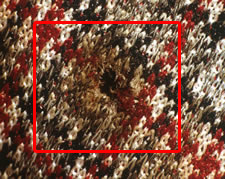- 01: Introduction
- 02: History
- 03: Propellants, Firearms, and Ammunition Development
- 04: Modern Firearms Manufacture
- 05: Small Arms Ammunition
- 06: Evidence Handling Procedures
- 07: Equipment and Instrumentation
- 08: Examination of Firearms
- 09: Cartridge and Shotshell Examination
- 10: Characterization and Evaluation of Fired Projectiles
- 11: Bullet Comparison and Identification
- 12: Gunshot Residue and Distance Determination
- Introduction
- Objectives
- AFTE Knowledge and Ability Factors
- Powders and Residues
- Examination
- Distance Determination
- Significance of Results
- Contact Shot
- Nitrite Residues
- Vaporous Lead Residues
- Residues Consistent with the Passage of a Bullet
- Residues Consistent with the Discharge of a Firearm
- Interpretation Challenges
- Reproduction of Results
- Nitrite Residue Patterns
- Shot Patterning
- Chemical Testing
- Shot Pattern Reproduction
- Selected Bibliography
- 13: Toolmark Identification
- 14: Communicating Results
- Resources


Reproduction of Results
Home > Gunshot Residue and Distance Determination > Distance Determination > Reproduction of Results
To reproduce results, the suspect firearm must be available. The size and density of residue patterns vary based on a combination of factors that may include the firearm, ammunition, barrel length, caliber, powder type, and powder charge. When residue patterns are reproduced in a shooting case, it is essential that the firearm and ammunition used in known-distance testing be as similar as possible to that used in the case.
Sources of testing ammunition may include
- evidence ammunition from the case, per laboratory protocol,
- purchased ammunition (same brand, stock number, with the same powder, projectile and primer components),
- reference ammunition (same brand, stock number, with the same powder, projectile, and primer components).
Note: Examiners should always be aware that reference collections/database programs are seldom all inclusive; all available resources and examiners should be consulted.
Selection of test target media is also an important factor. For the majority of cases, chemically uncontaminated white twill jean cloth is suitable to approximate the characteristics of a variety of fabric types.

White cotton twill jean would not produce
residue patterns comparable with the above.
However, there are instances in which the physical characteristics of the fabric of a victim’s garment preclude the reproduction of a meaningful test pattern. For example, artificial fibers, leather or plastic, or an open weave or fuzzy texture may require that fabric be purchased to duplicate the evidence material. It may be obtained at a fabric store, or a portion of the evidence may be used, based on laboratory protocol.
If the questioned surface is drywall, paneling, upholstery, etc., the same alternative sources apply.




